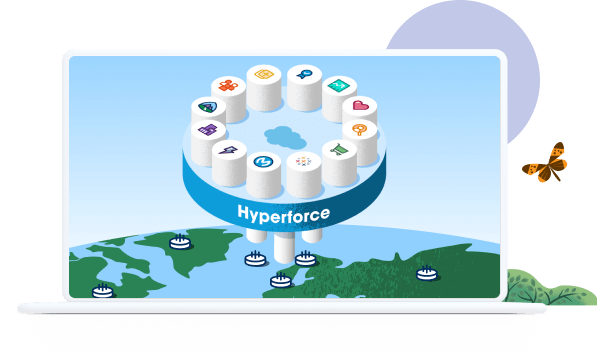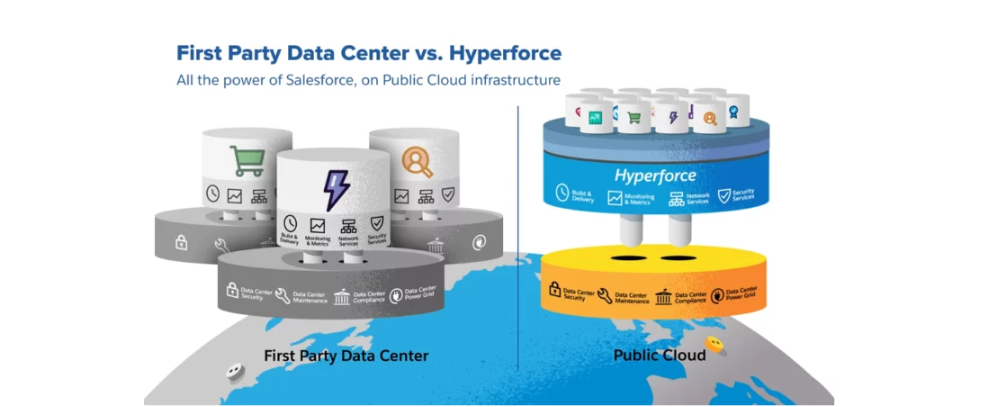Exploring the Power of Salesforce Hyperforce

Welcome to a new era of cloud computing with Twopir Consulting as we unravel the transformative capabilities of Salesforce Hyperforce. This cutting-edge technology marks a significant stride in the Salesforce ecosystem, redefining how businesses leverage the potential of the cloud. Let’s delve into the key aspects that make Hyperforce a game-changer, ensuring your business thrives in the digital landscape.
Understanding Salesforce Hyperforce:
At the heart of innovation, Salesforce Hyperforce is a reimagination of architecture, empowering clients to seamlessly run and manage Salesforce applications on major public cloud platforms such as AWS, GCP, and Azure. This strategic shift from traditional data center-based models to a cloud-centric approach introduces unparalleled scalability, flexibility, and enhanced performance.
Key Features and Benefits:
- Scalability: With Salesforce Hyperforce, organizations can easily scale their Salesforce instances based on their evolving business needs. The elasticity of cloud platforms allows for seamless expansion or contraction of resources, ensuring optimal performance even during peak usage periods.
- Global Availability: By leveraging the infrastructure of major public cloud providers, Salesforce Hyperforce enables organizations to deploy Salesforce instances closer to their regional or global user bases. This reduces latency and enhances user experience, especially for businesses with a distributed workforce or customer base
. - Enhanced Security: Salesforce has always prioritized data security, and Hyperforce continues that legacy. By leveraging the robust security measures offered by public cloud providers, Hyperforce ensures that customer data is protected at every level. The cloud providers’ advanced security features, such as encryption, threat detection, and access controls, enhance data protection and compliance.
- Improved Performance: The cloud-native architecture of Salesforce Hyperforce enables faster data processing and improved performance. Organizations can leverage the distributed computing capabilities of the cloud to deliver real-time insights, accelerate business processes, and enhance overall productivity.
- Flexibility and Innovation: Hyperforce allows businesses to take advantage of the ever-expanding suite of services and capabilities offered by public cloud providers. This means organizations can seamlessly integrate Salesforce with other cloud services, utilize AI and machine learning tools, and innovate at a faster pace.
- Simplified Management: Salesforce Hyperforce simplifies the management of Salesforce environments by leveraging the operational capabilities of the public cloud platforms. Organizations can leverage tools provided by the cloud providers to monitor, manage, and optimize their Salesforce instances, reducing the burden on IT teams.
Hyperforce Architecture:

The Hyperforce architecture is built on three main components:
- Salesforce Core Services: The heart of the CRM application, including user management, data storage, and security.
- Salesforce Platform Services: Encompassing Force.com, Heroku, and Einstein Analytics for building custom applications.
- Public Cloud Infrastructure: AWS, GCP, and Azure provide the underlying compute, storage, and networking infrastructure.
Use Cases for Salesforce Hyperforce:
Explore the diverse applications of Salesforce Hyperforce across industries:
- Global Enterprises: Deploy regional instances for improved data access and reduced latency.
- Highly Scalable Applications: Dynamically adjust resources to accommodate rapid growth or seasonal demand.
- Data-Intensive Workloads: Harness cloud power for effective handling of large-scale analytics tasks.
Conclusion:
Salesforce Hyperforce is a game-changing paradigm in cloud computing, offering unparalleled scalability, flexibility, and performance. Twopir Consulting, with its commitment to excellence, is ready to guide new clients in leveraging this technology. Whether you’re a global enterprise, dealing with data-intensive workloads, or seeking enhanced security and innovation, Hyperforce delivers, unlocking the true potential of cloud computing and steering your business toward success in the digital age.
Contact Twopir Consulting today to embark on a transformative journey with Salesforce Hyperforce!
Contact Us
We would love to hear from you
Please feel free to send us a message via the form
